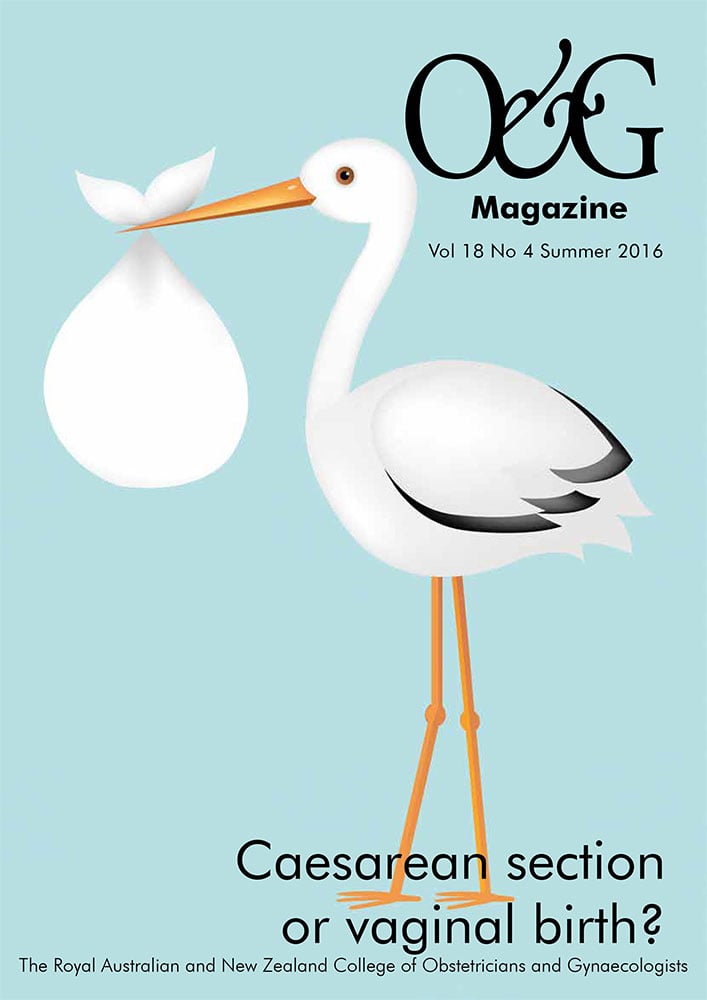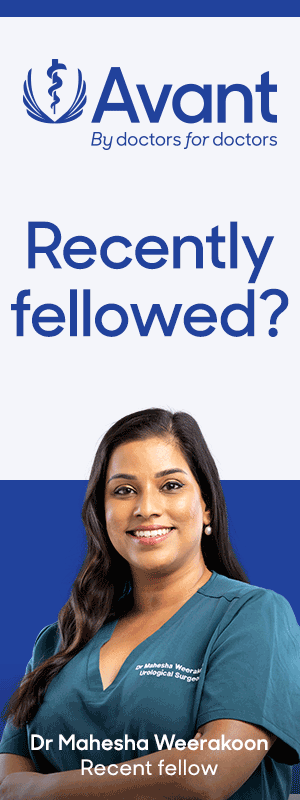At the time of writing, the October issue of ANZJOG has just appeared and the December issue is in preparation.
October kicks off with a thoughtful and timely editorial from Dr Clare Boothroyd1 on the question of single embryo transfer in IVF, referring to a paper by Miller et al Single embryo transfer for all?)2 later in the issue, and a Letter to the Editor from Newitt et al (Has the twin rate after in vitro fertilisation really decreased in Australia).3 Further on the topic of twins, among the Original Articles, is a paper from Hehir et al on gestational hypertensive disease in twin pregnancy, from the large national cohort study into twin pregnancies recently conducted in Ireland.4
The October issue also sees the first of what it is hoped with be a regular series of Current Controversies in Obstetrics and Gynaecology. From Prof Peter Dietz and Dr Lynda Exton we have an opinion piece entitled ‘Natural childbirth ideology is endangering women and babies’ in which the authors argue that caesarean section rates should not be used as measures of the success of pregnancy care.5 Taking a differing view, Profs David Ellwood and Jeremy Oats state that ‘Every caesarean section should count’, pointing to the short-, medium- and long-term consequences of caesarean birth.6 Both are excellent papers and firmly evidence-based, representing the two sides of this ongoing and contentious argument in our discipline. The two sets of authors have a right of reply which will be published in the December issue of ANZJOG; I also look forward to some robust Letters to the Editor on these topics. Current Controversies will appear in the February, June and October issues of ANZJOG with the author replies in the intervening issues. Suggestions for further controversial topics will be welcomed by the Editor.
Breech birth is further explored in an article from Bin et al comparing outcomes of breech birth by mode of delivery.7 This population linkage study showed that, among women considered eligible for vaginal breech birth, there were higher rates of neonatal morbidity than among women undergoing planned caesarean section, thereby adding considerably to evidence on this topic. Other obstetric research articles deal with the at-times conflicting advice, given by healthcare professionals to women who have undergone either caesarean section or hysterectomy, about when they can return to driving (Shand et al8) and the knowledge of a cohort of New Zealand women about nutrition and physical activity during pregnancy (Okesene-Gafa et al9).
Among the original articles in Gynaecology, Wilson et al look at the degree to which RANZCOG trainees across Australia and New Zealand are supported in simulation training in surgery in the course of their clinical rotations. They report that, despite recognition of the importance of simulation training for the increasing numbers of trainees, and the availability of simulation in teaching hospitals, few hospitals provide simulation training curricula, allocated time or supervision for their trainees – gaps which need to be addressed urgently.10 Other original articles demonstrate the efficacy of local anaesthetic instilled into the uterine cavity for pain relief following hysteroscopy of fast track surgery for selected gynaecological oncology patients and of tension-free vaginal tape procedures in conjunction with repair of pelvic organ prolapse.11 12 13 In the section devoted to Sexual and Reproductive Health, Newton et al explore the reasons women make decisions about surgical or medical termination of pregnancy, and the authors call for wider availability of medical termination.14
The December issue carries an interesting research/opinion paper from Tremellen and Everingham, about the knowledge and views of Australians around access to gestational surrogacy; they argue strongly for well-regulated compensated surrogacy in Australia to reduce the need for Australians to travel overseas.15 There are also more than a dozen original research papers that I will mention in my next O&G Magazine column and which will provide you with Christmas reading.
It is with great pleasure that we publish in the December issue the list of names of all those who have acted as reviewers in the period October 2015 to October 2016. In the past year we have had 332 reviewers, a significant increase on the 272 of the previous year. I am extremely grateful to all of you who have given your time and expertise to reviewing for the Journal – we could not publish ANZJOG without your input. We are always looking for more reviewers though, so if you are interested please contact Sarah Ortenzio at [email protected]. There is no need to be an academic or to have a vast knowledge of statistics to review – many papers simply require the eager eye of an experienced clinician.
I would also like to thank Sarah Ortenzio, the Periodical Publications Coordinator, who does a fantastic job in the day-to-day running of ANZJOG and is always ready to deal with unexpected glitches. It has been a pleasure to work with Sarah in my first year as ANZJOG Editor.
Season’s greetings to all.
References
- Boothroyd C. Twinning: Double, double, toil and trouble? ANZJOG. 2016;56(5)445-446.
- Miller L, et al. Single embryo transfer for all? ANZJOG. 2016;56(5):514-17.
- Newitt C, et al. Has the twin rate after in-vitro fertilisation really decreased in Australia? ANZJOG. 2016;56(5):543-4.
- Hehir M, et al. Gestational hypertensive disease in twin pregnancy: Influence on outcomes in a large national prospective cohort. ANZJOG. 2016;56(5):466-70.
- Dietz HP, Exton L. Natural childbirth ideology is endangering women and babies. ANZJOG. 2016;56(5):447-49.
- Ellwood D, Oats J. Every caesarean section must count. ANZJOG. 2016;56(5):450-52.
- Bin YS, Roberts CL, Ford JB, Nicholl MC. Outcomes of breech birth by mode of delivery: a population linkage study. Aust NZ J Obstet Gynaecol. 2016;56(5):453-59.
- Shand A, et al. Knowledge, advice and attitudes toward women driving a car after caesarean section and hysterectomy: a survey of obstetricians, gynaecologists and midwives. ANZJOG 2016;56(5):460-65.
- Okesene-Gafa R, et al. Knowledge and beliefs about nutrition and physical activity during pregnancy in women from South Auckland region, New Zealand. ANZJOG 2016;56(5):471-83.
- Wilson E, et al. Simulation training in obstetrics and gynaecology: what’s happening on the front line? ANZJOG. 2016;56(5):496-502.
- Mahomed K, et al. Intrauterine anaesthetic after hysteroscopy to reduce post-operative pain: A double blind randomised controlled trial. ANZJOG 2016;56(5):484-88.
- Carter J et al. Optimising recovery after surgery: predictors of early discharge and hospital readmission. ANZJOG. 2016;56(5):589-95.
- Roman J. Subjective outcome of 166 tension-free vaginal tape procedures performed by a single surgeon: the Braemar experience. ANZJOG. 2016;56(5):503-07.
- Newton D, et al. How do women seeking abortion choose between surgical and medical abortion? Perspectives from abortion service providers. ANZJOG. 2016;56(5):523-9.
- Tremellen K, Everingham S. For love or money? Australian attitudes to financially compensated (commercial) surrogacy. ANZJOG. doi:10.1111/ajo.12559.






Leave a Reply